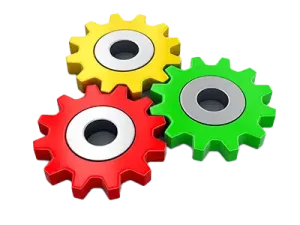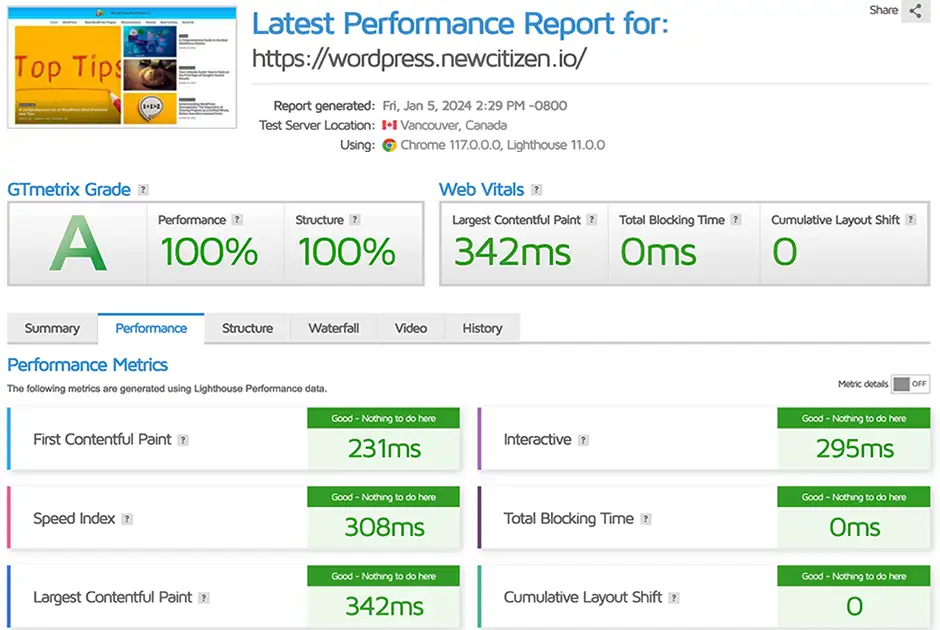In the realm of WordPress development, there’s a lot of talk about certain practices that experts claim can slow down your website.
But here’s where the plot thickens: the internet is a wild place, full of advice that is not only not helpful but wrong. And it’s not just one voice; it seems like everyone is echoing the same unhelpful tips, parroting around wrong information, based on misconceptions and misinformation.
Today, I want to address and clarify some of these areas. For this website, even when adopting techniques and features that are typically advised against, I was still able to achieve a site speed of around 300 milliseconds.
This demonstrates that with the right Optimization strategy, you can attain desired speed results for your WordPress website.
- Use of Elementor: You’ve probably heard this before: “Avoid using Elementor at all costs; it’ll just slow down your site.” Or perhaps, “Elementor is so bloated. Why on earth would you use it?” Well, I’m here to challenge these misconceptions with concrete evidence.
Believe it or not, I’m not just using one or two, but I am using three Elementor plugins on my site. And guess what? The performance metrics speak for themselves.
- Avoiding the use of too many images: Conventional wisdom in WordPress circles suggests minimizing image use, especially on your homepage, to speed up site loading times. Contrary to this advice, I loaded my site with high-quality, detailed images, and yet, the impact on loading times was marginal.
- Using More than 2 Font types: Regarding fonts, the standard advice is to limit your WordPress site to just two font types. I, admittedly a bit disorganized, ended up using around seven different font types, a big no-no in the usual playbook. But here’s the kicker: my site’s speed remains unaffected and impressive.
- Using Shared Hosting: Most of the online literature will tell you that for lightning-fast website speeds, you should steer clear of shared hosting plans in favor of dedicated or cloud hosting. Contrary to this, I’ve been using shared hosting and still managed to achieve speeds much faster than the majority of individuals that use dedicated and even cloud hosting solutions
- High number use of plugins: There’s a prevalent belief that the more plugins you have, the slower your site becomes. I’m running over 15 plugins on my site (which, for security reasons, I won’t list), including several known to impact site performance. And yet, the results are there for all to see – outstandingly fast response times.
- TTFB (Time to First Byte): Many experts will tell you that to achieve a low TTFB, you need to be close to your hosting provider’s location. In my case, my server is in Virginia, and the testing server is in Vancouver, Canada – a distance of about 2,396 miles! Despite this considerable distance, I’ve achieved TTFB scores in the low teen milliseconds.
I also conducted my testing during peak times, which means network congestion and high load on my shared hosting servers. Did that affect my site’s performance? Not at all. The results were as good as they could get.
I want to emphasize that for preparing everything for this Post, I honestly was not trying to run up the score.
There were additional optimizations I could have implemented for even better results. But here’s the thing: Web development and user experience experts typically recommend a site loading time of under 2 seconds.
This benchmark is based on studies showing that visitors tend to lose patience and leave sites that take longer to load. My site is already loading at speeds 10 times faster than this recommended benchmark.
Over the years, I’ve met many individuals who become obsessed with website speed. While it’s essential, I urge my readers not to fixate on it.
As long as your site meets the recommended speed of 2 seconds or better, there’s no need to get sidetracked by investing your energy in something that won’t add additional value.





